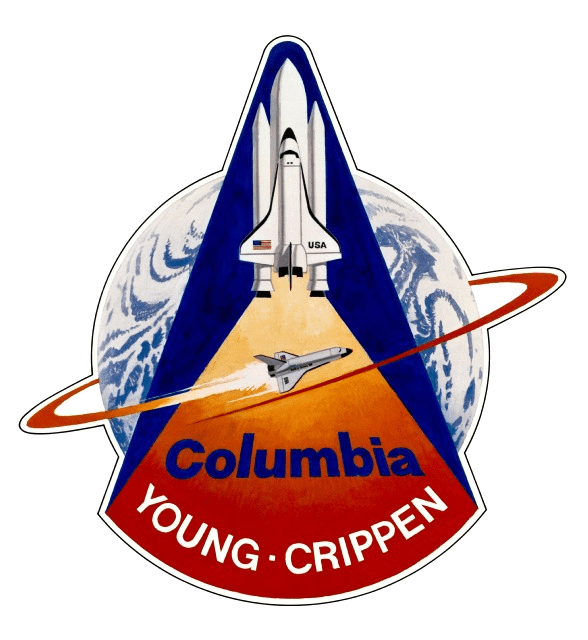The first American crewed space flight since the Apollo-Soyuz Test Project six years earlier, Columbia's maiden flight on 12 April 1981 was an unequivocally enourmous moment for the United States. STS-1 marked a new beginning for manned spaceflight as a whole too, as it was the first crewed flight to space on a resuable vehicle.
Mission
STS-1 was a verification flight to confirm Columbia's spaceworthiness, and therfore the sole payload was a sensor package that recorded the orbiter's performance duing launch, orbital flight and landing.
"The boldest test flight in history" experienced plenty of problems as expected on the maiden flight, including an overpressure wave damaging the heat-shield and pushing the orbiter body flap past the point where it should have been destroyed but Young and Crippen were able to safely return to Earth after completing their mission on orbit.
The crew spent a total 53 hours in orbit, covering a total of 1.7 million kilometer (~1.1 million miles) before landing at Edwards Air Force Base on 14 April.
Launch
Initally, the launch of STS-1 was scheduled for midday on the 10th of April, but due to the failure of Columbia's primary computers to provide the correct timing to the backup flight system during the orbiter's transition to its flight configuration, 18 minutes before the launch was supposed to take place. In an interesting twist of fate, this delay pushed the launch back to exactly 20 years after Yuri Gagarin made humankind a spacefaring species. In 2001, the momentous coincidence of these two events was memorialized by the establishment of Yuri's Day.
On-flight Music
Blastoff Columbia - Roy McCall (w. Jerry W. Rucker)
Blastoff Columbia is a wonderfully, comically bad love letter to the Shuttle Space Team, reflecting on the journey of the Columbia to space. It is a tribute to all the hard work and dedication of those that built and would fly Columbia.
Written by Jerry Rucker, a NASA engineer himself,the song begins with a simple, yet poignant, reference to the countdown that would herald the launch of Columbia:
"T-minus ten seconds and counting...
Ten, nine, eight, seven, six, five, four, three, two, one...
We have lift off! She's beautiful!"
This introduction leads into the song proper as it praises the various contractors that contributed to the Columbia as well Crippen and Young on board. Following the Columbia and her crew through the fligh, the song concludes with Rucker singing:
"America's still number one in space"
reflecting the special place this mission had in the American zeitgeist.
Reveille - Hudson and Harrigan
On the crew's second day in space, they were greeted by Houston DJs Hudson and Harrigan, performing a short skit poking fun at the crew and mission control.
Mission Control: "It's splashdown, and Crip, you could both use a shower. You've watied for this for twelve years and if you don't wake up, you're going to miss the whole darn thing. [Pause] Crip, get out of the rack."
Young: "No, no, no. If he wake up he'll spill coffee all over the controls."
Mission Control: "Get to work, you guys. You've got three hundred government agencies out there to support. Now hear this, now hear this, reveille, reveille, up all idlers. And that last wakeup call, we'd like you to scratch out 'splashdown' and insert 'touchdown'."
This was then followed by a performance of Reveille by an unknown artist - the last wakeup call for America's first shuttle mission.
